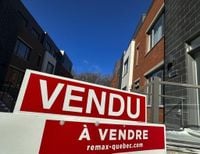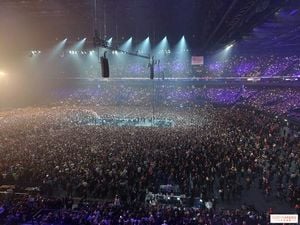The housing market in North America is displaying a complex tapestry of trends as April 2025 comes to a close, with regions like Sioux Falls, Brooklyn, and Montreal showcasing varying degrees of activity and price adjustments. In Sioux Falls, South Dakota, the housing market experienced a notable uptick, contrasting sharply with national trends. According to the Realtor Association of the Sioux Empire, new listings surged by 6.2 percent year-over-year, while closed sales increased by 2.1 percent. This is particularly significant given that nationwide, existing-home sales plummeted by 5.9 percent month-over-month and 2.4 percent year-over-year, as reported by the National Association of Realtors. The association attributed this downturn to "affordability challenges and economic uncertainty weighing on market activity."
In Sioux Falls, the median home price climbed to $318,000, reflecting a modest 1 percent increase compared to the previous year. The average price of homes sold was reported at $360,337, which remained essentially flat. Sellers in Sioux Falls received approximately 98.1 percent of their original list price, a slight decline from 99 percent a year ago. Homes in the area sat on the market for an average of 88 days, which is four days longer than last year. The market concluded April with a 4.1-month supply of homes, marking an 8.2 percent decrease from April 2024. Interestingly, homes priced between $150,000 and $200,000 sold the fastest, averaging just 75 days on the market, while luxury homes priced at $900,000 to $1 million took significantly longer, averaging 127 days.
Meanwhile, in Brooklyn, New York, real estate agents are observing rising home prices and a growing interest in move-in-ready properties. As noted by Alexander Maroni of Douglas Elliman, there remains a substantial premium for brand new townhouses and condominiums. He expressed that there is a strong demand for prime locations, particularly in neighborhoods like Cobble Hill, Brooklyn Heights, Carroll Gardens, and Park Slope. Maroni emphasized that buyers are increasingly hesitant to take on renovation projects, which he attributes to a shift in consumer patience post-COVID. He stated, "Nobody wants to do work, nobody wants to do renovation... it’s almost like a tale of two cities where the renovated, turnkey product in prime locations has multiple offers over asking price."
Ravi Kantha of Serhant echoed these sentiments, highlighting the pent-up demand among buyers after two sluggish years in New York City. He remarked, "When there is good product out there at a fair price, it goes and it goes quickly." However, he also pointed out that uncertainty stemming from tariffs is complicating the market landscape. Despite this, many properties are garnering significant attention, with bidding wars becoming commonplace. Charlie Pigott from Corcoran noted that the marketplace has adjusted to the reality of higher interest rates, which are expected to remain above 6 percent. He added, "I’m getting many bidding wars; things are going for over ask. I believe the marketplace has gotten comfortable with the new normal."
In Montreal, the housing market is also thriving, with April 2025 witnessing a robust level of activity. According to Charles Brant, Market Analysis Director at QPAREB, the market's activity was 8 percent above the historical average for the month. Single-family home sales surged by 12 percent, totaling 2,686 transactions, while condominium sales rose by 9 percent to 1,961 units. Multi-plex properties (2-5 units) also saw a solid increase of 11 percent, demonstrating broad-based demand across various property categories.
Home prices in Montreal continued their upward trajectory, with the median price of single-family homes climbing 9 percent to $625,000. Condominium prices also increased, reaching $424,500, up 6 percent from a year earlier. The most significant gains were observed in small income properties, where the median price jumped 10 percent to $830,500. Notably, the suburban markets surrounding Montreal are becoming increasingly competitive, with the South Shore now surpassing Laval as the priciest suburban market. The median price for single-family homes on the South Shore hit $634,000 in April 2025, compared to $600,000 in Laval. The sales-to-new-listings ratios in these areas indicate intense competition, with the North Shore reaching 81 percent and the South Shore 76 percent—well above the balanced market threshold of 50 percent. This competitive environment is expected to exert upward pressure on prices as buyers vie for a limited pool of available homes.
As we analyze these regional markets, it becomes evident that while some areas are thriving with increased sales and rising prices, others are grappling with broader economic challenges. The variations across regions highlight the complexity of the current housing landscape in North America, where local dynamics can diverge significantly from national trends. The interplay of consumer preferences, economic factors, and market conditions will undoubtedly continue to shape the real estate landscape as we move further into 2025.




